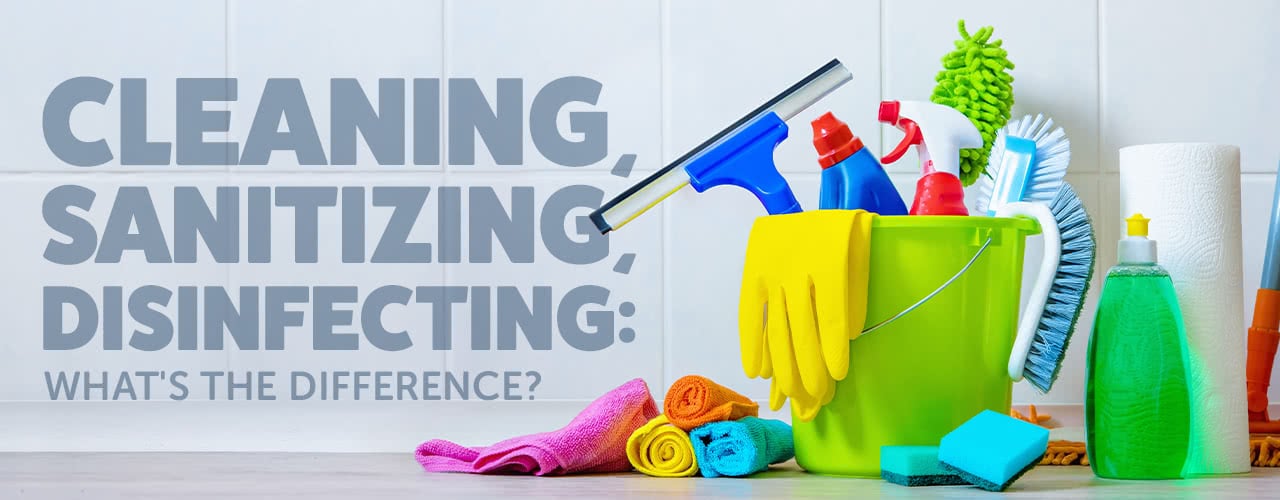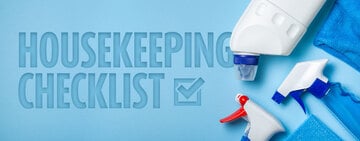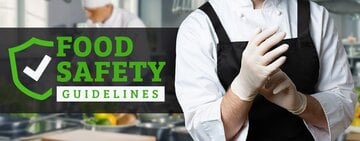Cleaning, Sanitizing, Disinfecting: What’s the Difference?
Last updated on Aug 7, 2025Janine JonesEnsuring a safe, compliant commercial kitchen hinges on understanding the critical differences between cleaning, sanitizing, and disinfecting. These terms are often mistakenly used interchangeably, and while all three are essential pillars of food safety, each targets distinct threats and achieves unique levels of pathogen reduction crucial for health code compliance. Mastering these distinctions is fundamental for developing an effective cleaning checklist that prevents cross-contamination and foodborne illness outbreaks in your establishment.
Shop All Cleaning SuppliesWhat Is Cleaning?
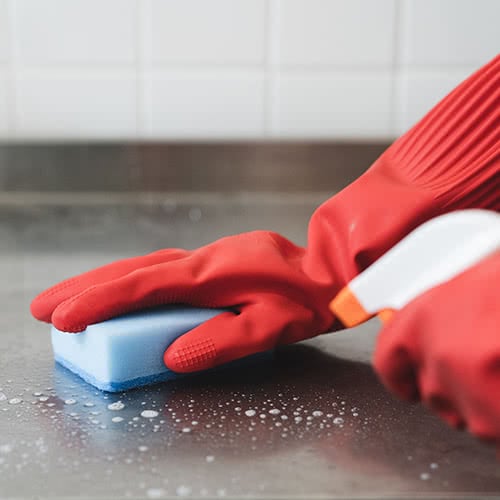
To clean something means to remove all of the visible contaminations on the surface, including dirt, spills, food particles, and dust by washing, brushing, or wiping the area. This process is surface level and does not eliminate germs, but it can help reduce their numbers. This is expected to be the first step in the cleansing process. Common cleaning products include:
- Soaps
- Detergents
- Vacuums
- Dusters
- Degreasers
- Glass Cleaners
How to Clean a Commercial Kitchen
Effective cleaning in a commercial kitchen starts with the thorough removal of visible soil, grease, and food debris from all surfaces using appropriate tools and detergents. Follow these essential steps for foundational food safety:
- Remove all loose items (equipment, utensils, food) from the area. Scrape off significant food particles and debris into waste bins.
- Use an NSF-certified commercial kitchen detergent or degreaser, diluted according to the manufacturer's instructions. Apply generously to surfaces, focusing on greasy or soiled areas.
- Use dedicated, clean tools appropriate for the surface. Apply physical agitation to dislodge grease, grime, and stuck-on food particles. Pay special attention to cracks, corners, and under equipment lips.
- Flush the surface with clean, potable hot water to remove all traces of detergent, loosened soil, and residual debris. Ensure no soapy film remains.
- Allow surfaces to air dry completely whenever possible. If wiping dry is necessary for immediate use, employ only single-use, disposable towels or clean, dedicated, dry cloths to prevent recontamination. Drying is crucial before applying sanitizer to food-contact surfaces.
What Should You Clean in a Commercial Kitchen?
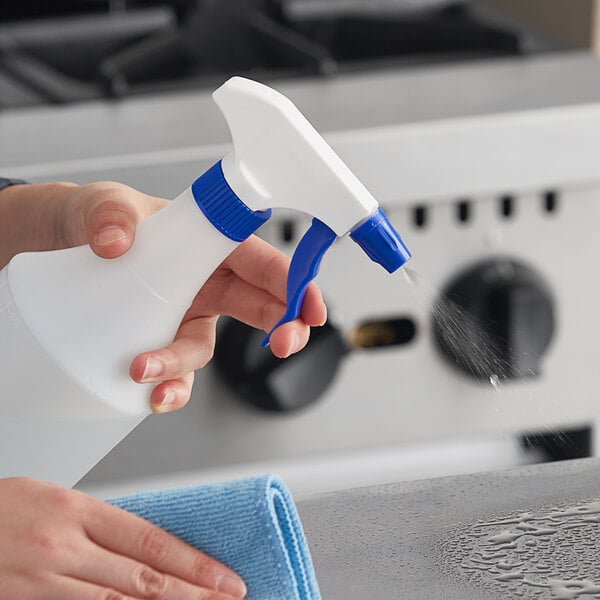
Every surface and item in your commercial kitchen that accumulates visible soil, grease, food debris, or spills requires regular cleaning as the essential first step in your food safety protocol. Focus on these critical areas prone to visible contamination:
- Food Preparation Surfaces
- Cooking Equipment
- Food Storage Areas
- Utility and Cleaning Stations
- Floors and Walls
- Waste Areas
- High-Touch Non-Food Surfaces
When to Clean in a Commercial Kitchen
Cleaning must occur whenever visible soil, grease, or debris is present, as well as at specific, scheduled intervals throughout your operation, to maintain health code compliance and prevent hazards. Implement cleaning at these critical junctures:
- Before Opening and After Closing
- Immediately After Spills or Splatters
- Between Tasks or Ingredient Types
- During Equipment Changeovers or Downtime
- After Equipment Use
- Upon Visible Soil Accumulation
- Before Sanitizing Food-Contact Surfaces
What Is Sanitizing?
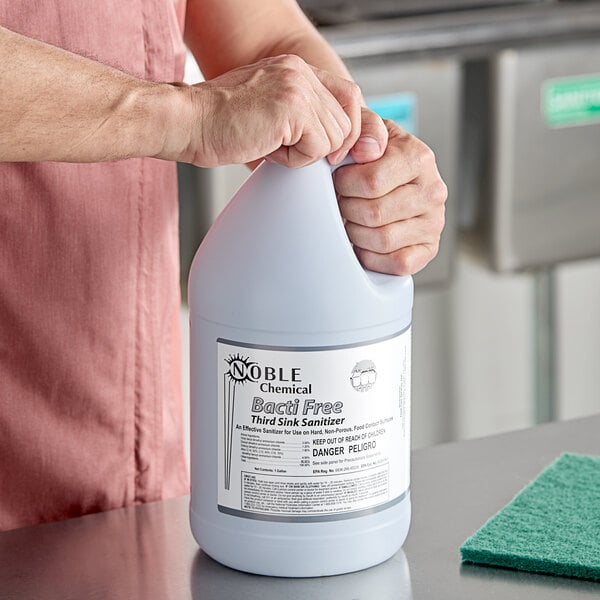
Sanitizing means reducing the number of microorganisms like bacteria, viruses, and fungi on a surface after it has been cleaned. The sanitizer used must reduce the number of bacteria to a level that is deemed safe by public health standards. To meet CDC requirements, sanitizing chemicals must kill 99.999% of the test bacteria in under 30 seconds.
Although sanitizing reduces the growth of harmful bacteria, it does not kill all of the viruses on a surface. Sanitizing is meant to be a preventative measure and is a vital practice in restaurants, schools, corporate offices, and hospitals. Every surface that comes into contact with food should be sanitized regularly, often several times a day.
How to Sanitize a Table That Has Been Used for Preparing Food
Follow these steps to sanitize a prep table that has been used for food tasks:
- Clean the surface of any visible debris.
- Rinse the surface with soap and clean water. Do not use high-pressure washers that can end up spraying bacteria over a larger area.
- Sanitize the surface with food-safe sanitizer. Rinse the sanitizer if needed per the chemical’s directions.
- Allow the surface to air dry for a minimum of 30 seconds to a minute to allow the sanitizer to work.
Because of how easily bacteria can be transferred to food and cause illness, proper sanitizing practices are highly necessary for restaurant atmospheres. It’s important to use sanitizing methods in your restaurant kitchen to clean tabletops, cutting boards, and utensils to prevent cross-contamination that can cause food poisoning and allergic reactions.
What Should You Sanitize in a Commercial Kitchen?
The general rule of sanitation is that if an item comes into contact with food, it should be sanitized. Here are common items that will need to be regularly sanitized in your kitchen:
- Cutting Boards
- Worktables
- Pots and Pans
- Serving Utensils
- Countertops
- Cooking Equipment
When to Sanitize in a Commercial Kitchen
Your health inspector will be looking for proper cleaning and sanitizing practices in your restaurant. Follow the list below to know when you should be sanitizing in your kitchen:
- Whenever you’re done with a food prep task
- Whenever you’re switching between food types and ingredients
- If your task is interrupted, forcing you to walk away from the station
- Every 4 hours
What Is Disinfecting?

To disinfect means to kill specific viruses and pathogens on a surface using a disinfectant. These cleaning agents must kill 99.999% of infectious bacteria, viruses, and fungi within a 5-10 minute period. It is recommended to disinfect frequently touched surfaces. Bathrooms should always be disinfected since the surfaces inside can harbor pathogens that can lead to the spread of disease. Common disinfectants include:
- Bleach
- Alcohol
- Chlorine
How to Disinfect
For frequently touched surfaces, follow these steps to disinfect them properly:
- Read the label of the disinfectant you plan on using to ensure that you understand the directions for that product.
- Clean the surface of any visible debris.
- Rinse the surface with soap and clean water. For doorknobs and handrails, use general-purpose cleansing wipes.
- Disinfect the surface with your disinfectant by following the directions on the product. Leave the disinfectant on the surface for 3-5 minutes or as long as the product calls for.
- Rinse the disinfectant off the surface if the product calls for it.
What Should You Disinfect in a Commercial Kitchen?
Here are some items in your facility that should be regularly disinfected:
- Light Switches
- Door Handles
- Elevator Buttons
- Handrails
- Bathroom Surfaces
- Faucet Handles
- Phones
When to Disinfect in a Commercial Kitchen
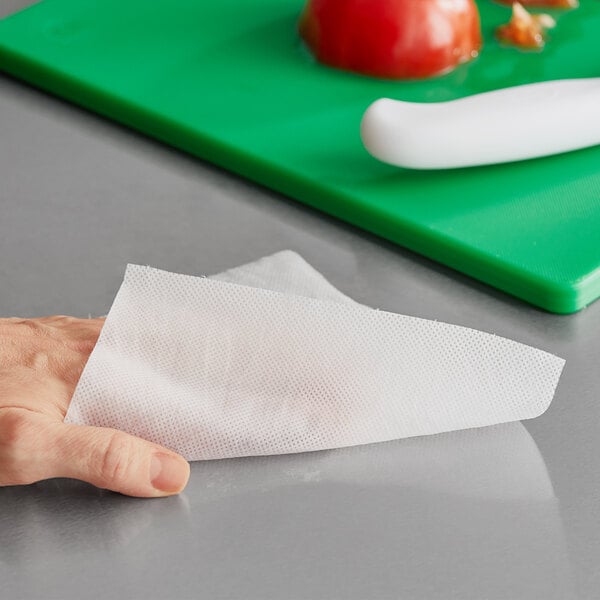
Disinfecting schedules may vary depending on your facility and the number of guests in your establishment. The following are some suggested moments when disinfecting should take place:
- Once a day at a minimum
- At a higher frequency during cold and flu seasons
- At a higher frequency during a virus outbreak
- Whenever bodily fluids are on a surface
Do Disinfectant Wipes Kill Viruses?
Because disinfectant wipes have shorter dwell times than most disinfectant chemicals, there is concern that they do not have enough time to kill the viruses on a surface. The key to successfully disinfecting a surface is to read the details on the cleaning wipes you choose to use.
What Is the Difference Between Cleaning and Sanitizing?

The main difference between cleaning and sanitizing is that cleaning is the act of clearing debris and deposits on a surface, while sanitizing involves killing bacteria after the surface has already been cleared or wiped off.
When comparing cleaning vs sanitizing, you’ll want to make sure that cleaning happens first regardless of the surface, and that sanitizing follows depending on the area. Items that come into contact with foods and that are often touched should be sanitized, while locations like hallway floors and windows do not need to be regularly sanitized as they are considered low-risk surfaces.
Disinfect vs Sanitize
The difference between sanitizing and disinfecting is based on the number of bacteria each process eliminates. While sanitizing is meant to kill the majority of germs, it cannot make antiviral claims. Disinfecting is more potent than sanitizing and can kill nearly 100% of bacteria, viruses, and fungi while targeting specific disease-carrying microorganisms like the flu virus, norovirus, and coronavirus.
Because disinfecting is more intense than sanitizing, disinfectants will often be used in areas with a vulnerable population, such as healthcare facilities and daycare centers. Disinfectant foggers are sometimes used in these locations to dispense disinfecting chemicals over large surface areas. Sanitizing would be enough for foodservice items such as tabletops and cutting boards, but a disinfectant would be needed for places like bathrooms and fitness centers.
Cleaning, sanitizing, and disinfecting are your kitchen's frontline defense against contamination, health violations, and foodborne illness outbreaks. Consistently executing each step as an integrated protocol directly safeguards your customers and operational integrity. By embedding these science-backed practices into your workers' daily routines, you transform compliance from a checklist into a culture of safety.
